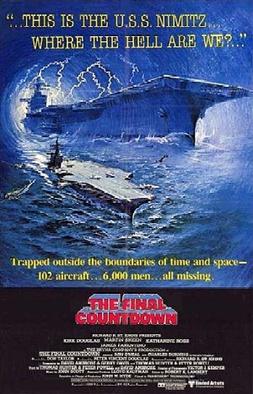
The Final Countdown is a 1980 American science fiction war film about a modern nuclear-powered aircraft carrier that travels through time to the day before the December 7, 1941, attack on Pearl Harbor. Produced by Peter Douglas and Lloyd Kaufman and directed by Don Taylor, while Kaufman also served as an associate producer and had a minor acting role. The film contains an ensemble cast starring Kirk Douglas, Martin Sheen, James Farentino, Katharine Ross, Ron O'Neal and Charles Durning.
The Nikkatsu Corporation is a Japanese entertainment company known for its film and television productions. The name Nikkatsu amalgamates the words Nippon Katsudō Shashin, literally "Japan Motion Pictures".
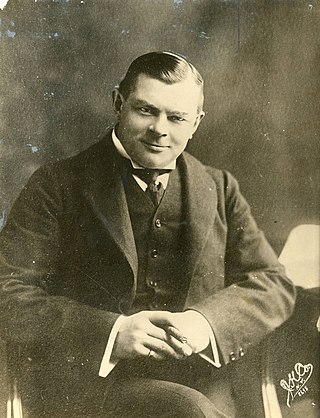
Charles Urban was a German-American film producer and distributor, and one of the most significant figures in British cinema before the First World War. He was a pioneer of the documentary, educational, propaganda and scientific film, as well as being the producer of the world's first successful motion picture colour system.

Kinemacolor was the first successful colour motion picture process. Used commercially from 1909 to 1915, it was invented by George Albert Smith in 1906. It was a two-colour additive colour process, photographing a black-and-white film behind alternating red/orange and blue/green filters and projecting them through red and green filters. It was demonstrated several times in 1908 and first shown to the public in 1909. From 1909 on, the process was known and trademarked as Kinemacolor and was marketed by Charles Urban’s Natural Color Kinematograph Company, which sold Kinemacolor licences around the world.

George Albert Smith was an English stage hypnotist, psychic, magic lantern lecturer, Fellow of the Royal Astronomical Society, inventor and a key member of the loose association of early film pioneers dubbed the Brighton School by French film historian Georges Sadoul. He is best known for his controversial work with Edmund Gurney at the Society for Psychical Research, his short films from 1897 to 1903, which pioneered film editing and close-ups, and his development of the first successful colour film process, Kinemacolor.

Actuality film is a non-fiction film genre that uses footage of real events, places, and things, a predecessor to documentary film. Unlike documentaries, actuality films are not structured into a larger narrative or coherent whole. During the era of early cinema, actualities—usually lasting no more than a minute or two and usually assembled together into a program by an exhibitor—were just as popular and prominent as their fictional counterparts. The line between "fact" and "fiction" was not as prominent in early cinema as it would become once documentaries became the predominant non-fiction filmmaking form. Actuality as a film genre is related to still photography.

The Veitch Nurseries were the largest group of family-run plant nurseries in Europe during the 19th century. Started by John Veitch sometime before 1808, the original nursery grew substantially over several decades and was eventually split into two separate businesses—based at Chelsea and Exeter—as it became unfeasible to run the whole operation from one location. There was a Veitch Nursery in Kingston at Coombe, on Kingston Hill. Famous plant hunters in the Victorian period employed by the Veitch family include the brothers Thomas Lobb and William Lobb from Cornwall and David Bowman.
The Warwick Trading Company was a British film production and distribution company, which operated between 1898 and 1915.

James A. Williamson was a Scottish photographer and a key member of the loose association of early film pioneers dubbed the Brighton School by French film historian Georges Sadoul. He is best known for The Big Swallow (1901), a trick film with innovative use of extreme close-up, as well as Fire! and Stop Thief!, dramas with continuity established across multiple shots.
The Urban Bioscope, also known as the Warwick Bioscope was a film projector developed by Walter Isaacs in 1897 for Charles Urban of the Warwick Trading Company. The projector used a beater movement. It has two names because it was created by Charles Urban and Walter Isaacs. It was a 35mm fast-pull-down-beater-movement machine allegedly based on Georges Demenÿ patents. In 1897, Urban joined Warwick Trading in the UK. At that time he brought with him the Bioscope from America for resale. Earlier versions of the scope projected both slides and films. These versions came with a "spoolbank" attachment that made it possible for very short films to be repeated without pause.
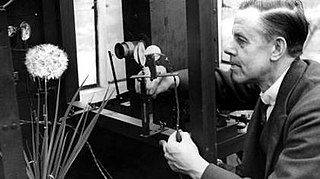
Frank Percy Smith was a British naturalist and early nature documentary pioneer, who explored time-lapse photography, microphotography, microcinematography, underwater cinematography and animation.

Floyd Martin Thornton was an American screenwriter and film director active in the United Kingdom in the 1910s and 1920s. He also directed films for the Natural Color Kinematograph Company.
The St Crispin's Day speech is a part of William Shakespeare's history play Henry V, Act IV Scene iii(3) 18–67. On the eve of the Battle of Agincourt, which fell on Saint Crispin's Day, Henry V urges his men, who were vastly outnumbered by the French, to imagine the glory and immortality that will be theirs if they are victorious. The speech has been famously portrayed by Laurence Olivier to raise British spirits during the Second World War, and by Kenneth Branagh in the 1989 film Henry V; it made famous the phrase "band of brothers". The play was written around 1600, and several later writers have used parts of it in their own texts.
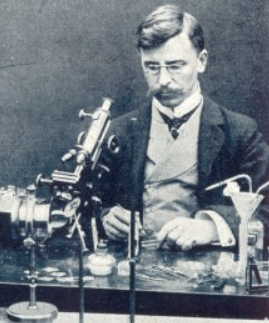
Francis Martin Duncan (1873–1961) was a British naturalist and nature documentary pioneer who worked for producer Charles Urban. He specialised in micro-cinematography and pioneered many of the techniques of future natural history filmmaking.
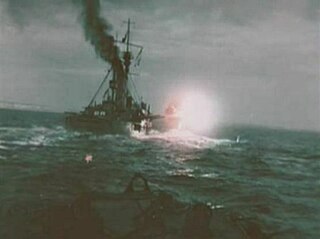
Britain Prepared is a 1915 British documentary feature film directed by Charles Urban. The film is silent and made in black-and-white with some colour sequences in the Kinemacolor additive color process.
The Natural Color Kinematograph Company was a British company formed by Charles Urban in 1909. It sold licences and produced films in Kinemacolor, the first successful colour motion picture process.
The Kinemacolor Company of America was an American company founded in 1910 by Gilbert H. Aymar and James K. Bowen. It distributed and produced films made in Kinemacolor, the first successful color motion picture process.
Ada Aline Urban was a British film company executive. She funded the Kinemacolor business established by her husband Charles Urban, helping it achieve global distribution as the first successful motion picture natural colour system. She became director of the Natural Color Kinematograph Company, which produced Kinemacolor films, as well as other of her husband's film companies. According to the Women Film Pioneers project of Columbia University Libraries, "she was the leading female figure in British film of her day".

Joseph 'Joe' Rosenthal (1864-1946) was a British camera operator who specialised in filming wars and travel subjects. Conflicts he filmed include the Second Boer War and the Russo-Japanese War. Though preceded as a war filmmaker by some amateurs, film historian Stephen Bottomore has called him the first 'true professional' to film a war.

Alice Rosenthal (1868-1935) was a British-Jewish film sales manager, film company owner and cinema owner. She was one of the pioneers of the British film industry.













